The Streets of London
“The Streets of London” published by John Jaques & Son, London, c.1880.
Victorian parlour game described as “a merry round game for from four to eight players” published by John Jaques & Son, London, c.1880. The complete street cry is printed along the top of each card and players compete to complete the most sets of street cries.
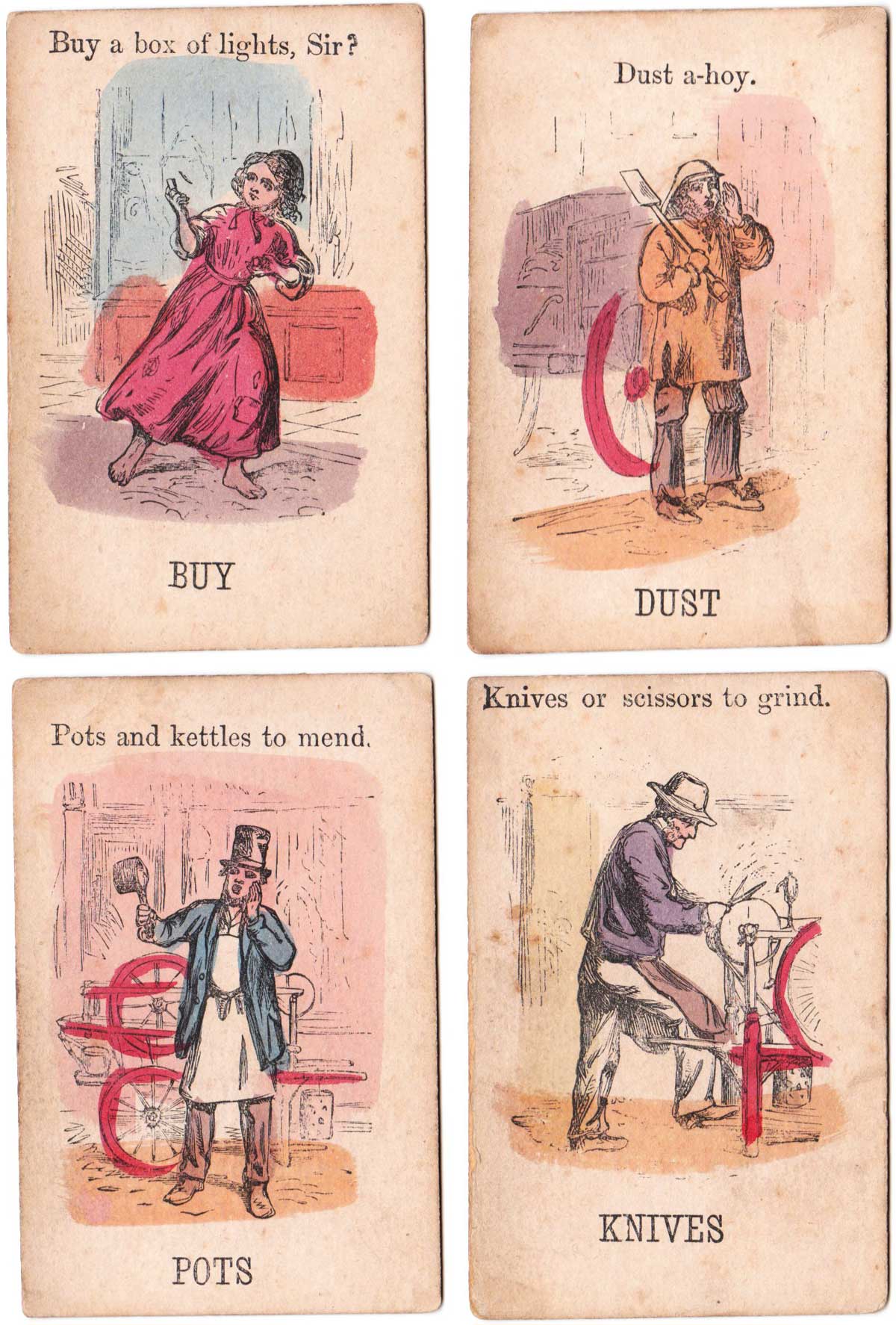
Above: four cards with colours applied by hand. The remainder of the cards in each set comprise a single word from the phrase. Images courtesy Rex Pitts.
Note from Roddy Somerville
I have an example of this card game with square corners. The colouring is different from, and more elaborate than, the ones currently shown. Sadly, my set lacks the "BUY" card and the rules. See the box►
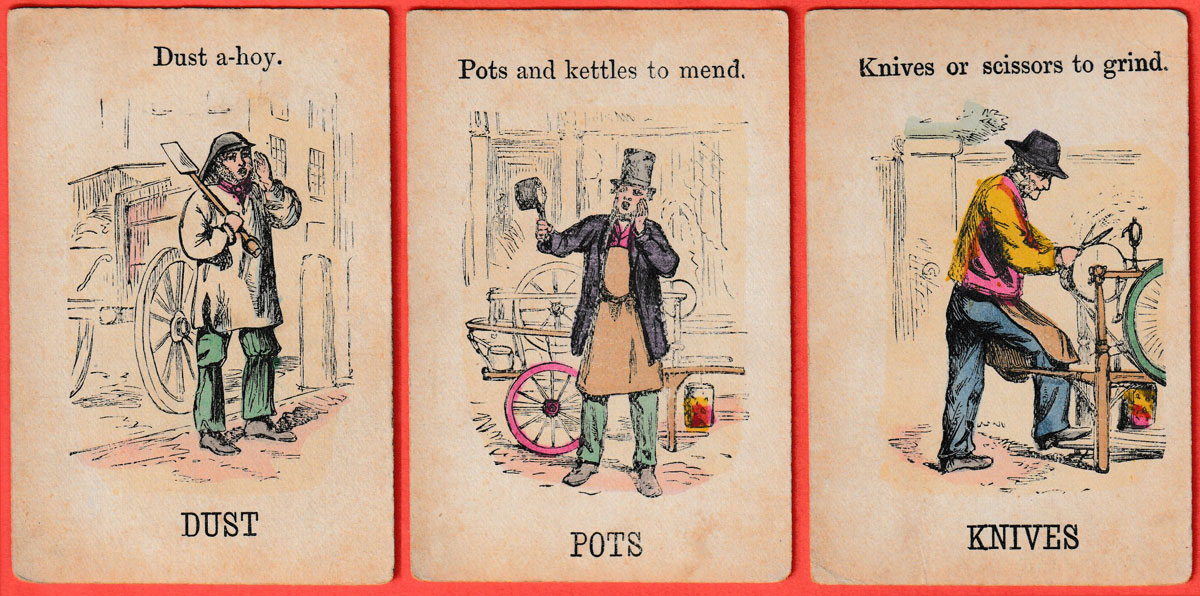
Above: three cards from a similar edition. Images courtesy Roddy Somerville.
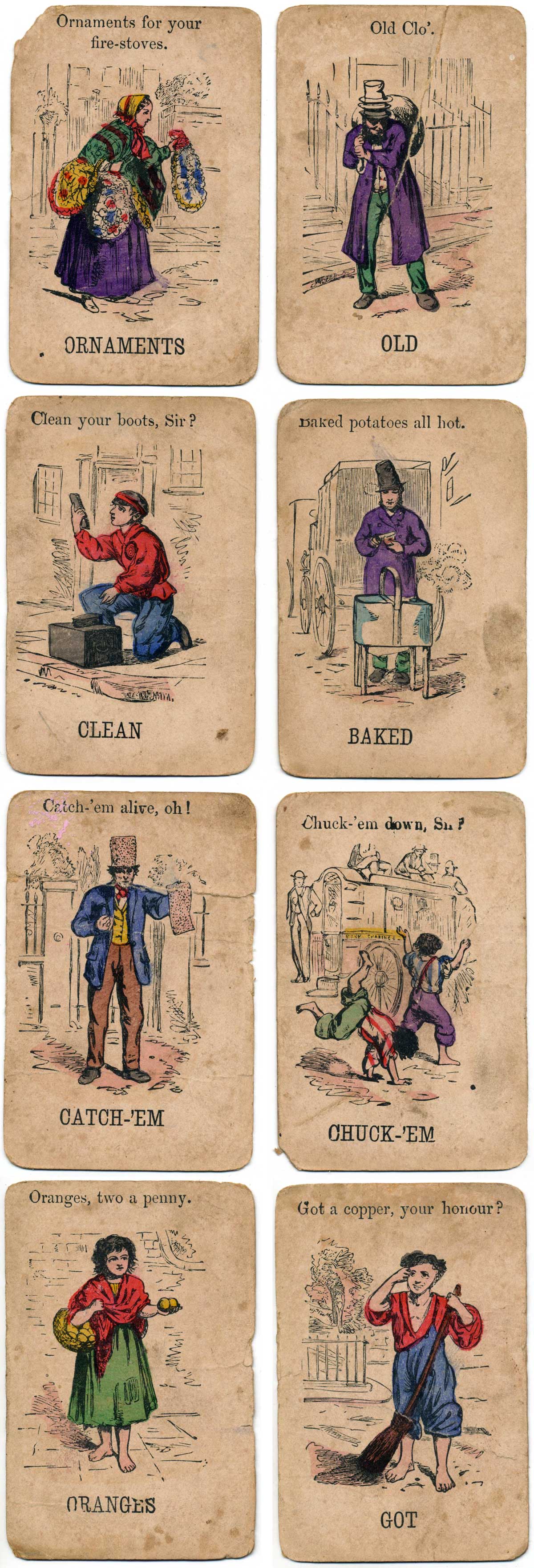
Above: eight stencil-coloured picture cards from the game with rounded corners (too rounded for them ever to have started life with square corners). The backs of the cards are plain pink. See the Rules► Images courtesy Matt Probert.
By Rex Pitts (1940-2021)
United Kingdom • Member since January 30, 2009
Rex's main interest was in card games, because, he said, they were cheap and easy to get hold of in his early days of collecting. He is well known for his extensive knowledge of Pepys games and his book is on the bookshelves of many.
His other interest was non-standard playing cards. He also had collections of sheet music, music CDs, models of London buses, London Transport timetables and maps and other objects that intrigued him.
Rex had a chequered career at school. He was expelled twice, on one occasion for smoking! Despite this he trained as a radio engineer and worked for the BBC in the World Service.
Later he moved into sales and worked for a firm that made all kinds of packaging, a job he enjoyed until his retirement. He became an expert on boxes and would always investigate those that held his cards. He could always recognize a box made for Pepys, which were the same as those of Alf Cooke’s Universal Playing Card Company, who printed the card games. This interest changed into an ability to make and mend boxes, which he did with great dexterity. He loved this kind of handicraft work.
His dexterity of hand and eye soon led to his making card games of his own design. He spent hours and hours carefully cutting them out and colouring them by hand.

Related Articles
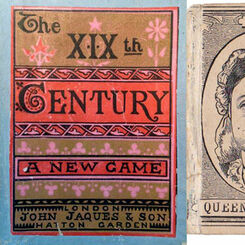
XIXth Century
The XIXth Century published by John Jaques & Son, c.1875.
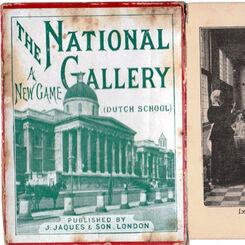
National Gallery (Dutch School)
National Gallery (Dutch School) published by J. Jaques & Son, c.1895.
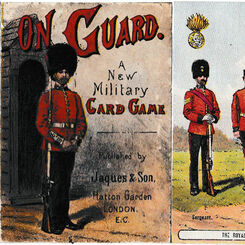
On Guard
On Guard military card game published by J. Jaques & Son, c.1880.
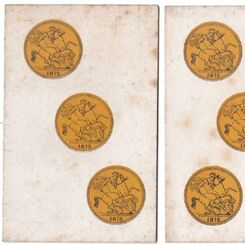
Shearing the Sheep
Shearing the Sheep published by J. Jaques & Son, c.1875.
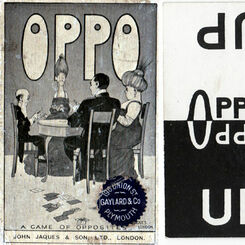
Oppo
Oppo, a game of opposites, published by J. Jaques & Son, Ltd, c.1920s.

The White Cat
The White Cat, a game of cats, kittens & mice, published by Jaques & Son, c.1860s.
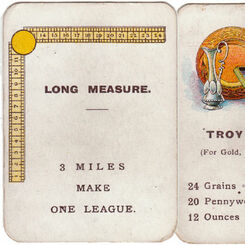
Weights and Measures
“Weights and Measures” card game by John Jaques & Son, Ltd., c.1910, a reminder of some of our more ...
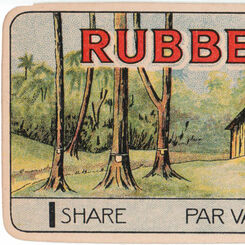
On Spec
“On Spec” is a round game based on selling stocks and shares, published by John Jaques & Son, c.1920...
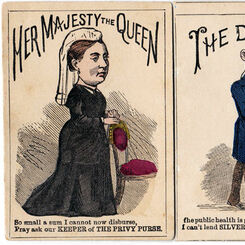
Lend Me Five Shillings
Lend Me Five Shillings; or, Her Majesty's Privy Purse by John Jaques & Son, c.1875
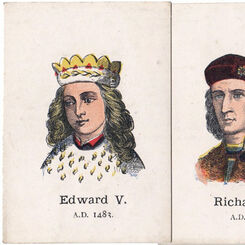
Sovereigns of England
Sovereigns of England published by Jaques & Son, c.1875.
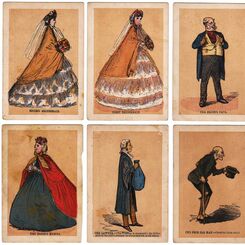
The Wedding
The Wedding game published by Jaques & Son, c.1875.
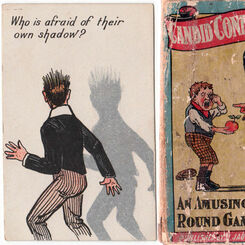
Candid Confessions
“Candid Confessions” published by Jaques & Son, Ltd, c.1905.

Spelka
Spelka, a word game published by John Jaques & Son Ltd, c.1908.

District Messenger
District Messengers were uniformed young men wearing little pill-box hats and mounted on bicycles wh...
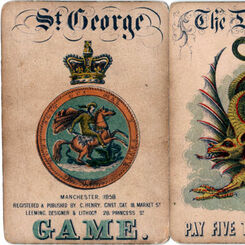
St George Game
St George Game, 1858, depicting St George and other saints engaged in battle slaying the dragon to s...
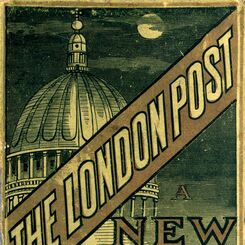
London Post
Jaques' The London Post Card Game, c.1895.
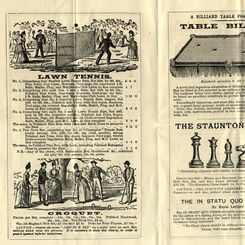
Jaques Advertising Leaflet
Jaques Advertising Leaflet showing Lawn tennis, Table Billiards, Staunton Chess, Croquet, etc.
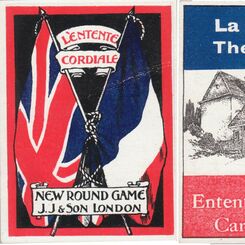
Entente Cordiale
Jaques' The Entente Cordiale Card Game, c.1905.
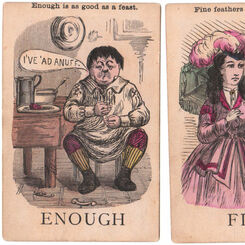
Jaques’ Illustrated Proverbs
Jaques’ Illustrated Proverbs, c.1870. The complete proverb is printed along the top of each card in ...
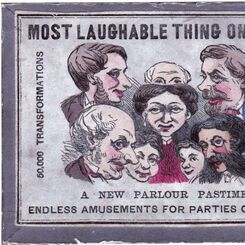
Most Laughable Thing on Earth
The Most Laughable Thing on Earth, or, A Trip to Paris published by H. G. Clarke & Co., London, c.18...
Most Popular
Our top articles from the past 60 days






















